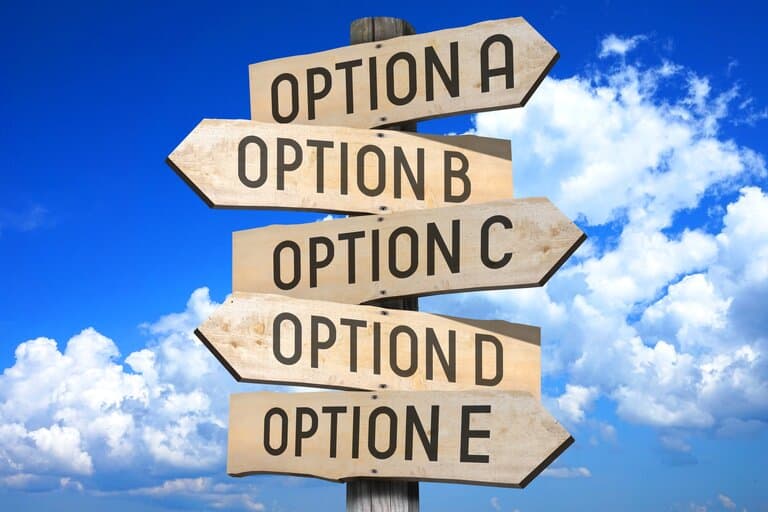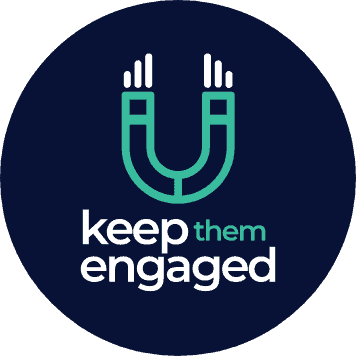
There is a substantial number of areas where gamification can be applied. In this articel I have examined the most interesting and most successful to date.
But also involved predictions (based on what I see in working with various industries) on areas where we might see more solutions that have been infused with gamification elements.
I hope this gives you some ideas and a new perspective on how you could apply gamification in your industry or area as well.
Gamification works great in retail
Applying gamification principles in retail, meaning game techniques is has shown immensly lucrative success. From various areas such as eCommerce to in-shop gamification examples of making the “going to the store” experience more fun and engaging.
Especially considering that more and more Millenials have entered work-life and therefore purchasing power. This is beneficial due to their background and familiarity with mobile applications and tech.
One great example has been implemented by one of the biggest lingerie company in the world: Victoria’s Secret.
What they have developed is the PINK Nation app, which is specifically tailored to target the younger audience with its name, design, and features.
The PINK nation app is basically combining the eCommerce experience with several gaming contests. In more detail, users play smaller games to find items which in turn gives them a chance to win prizes.
This is a great example of playing to advance what we see with progress bars but also ties into a degree of uncertainty which leaves a curious impression of what’s gonna happen next.
In addition and that is why I think this app is so successful, it allows users to create unique looks with Victoria’s Secret collections/products, appealing to the creativity within us humans.
Especially interesting is then that they let the community vote on which design/outfit looks the best.
Which is amazing to keep the engagement up, since you probably want to see if your design or the ones you’ve voted for are making it to the top.
Oh and I almost forget, inside the app you have of course the opportunity to purchase any garment or product you see from Victoria’s Secret.
Convenient isn’t it? Especially if you see how an outfit got a lot of votes so you just “know” that it must be looking amazing.
Again a great example of gamification in retail, based on the company’s research on who their target audience and how they can make use of their target audiences’ preferences, backgrounds, and interests.
Gamification for healthcare
Using gamification in the healthcare segment is another immensly interesting way to engage and motivate people to do something which is sometimes not fun.
I am personally incredibly lazy if I don’t have competition or see other people go to the gym.
I even downloaded the Adidas Running app in order to follow my friends and see if they are doing something to be in better shape.
Please don’t judge me too hard on the next picture…it’s my personal statistics…

And yes my friends are definitely doing more than me. And I know that because I get notifications about that fact and can see in the app how well my friends are doing and well, how lazy I am. Which is a great example of gamification in the healthcare environment.
By building this community and letting me see how others are advancing by going for a run every (freakin) day, pushes me to, at least do something as well.

If you combine this with the newest technology such as Fitbit & Co who have a similar concept of building a community and interacting with them by competing on who has a better gym performance or that annoying 10,000 step count, you get an amazing motivation and engagement factor.
Because you do not want to lose your face but also, since you know that this is actually good for your body you get another motivational factor to lift that butt from the couch and head to the gym or go for a run.
Another really cool application area within the healthcare segment is medication and chronic condition management.
An Austrian (the one in Europe with the mountains) company has created a smartphone app to help users with their diabetes management.
This has become super popular because of the design and the way they make the tedious task of managing diabetes less serious.
The community aspect, but also the continuous advancement/milestone views in a report keeps a user motivated to manage their diabetes household effectively, without missing an entry.
Gamification for education & teaching
This application area has a lot of opportunities to incorporate gamification elements to increase engagement.
I’m sure many of you have dreaded the algebra lectures, language classes, or chemistry classes, which were all rather dry topics.
What makes our current education system rather flawed is that each topic is taught to a group of students who have only a limited period of time until the subject moves on to the next area.
After each “sprint” of a topic let’s say 3 weeks to learn equations there will be a test to evaluate how well the material has been absorbed and understood.
Now here comes the flaw in our education system. A student who receives an A- for example has mastered around 90-95% of the material but lacked knowledge of 5-10%.
Now, that might be not the worst thing if you consider one simple topic but the issue is that our education system is built on knowledge from previous classes.

So if that A- student drags that small part of missing knowledge with him into the next subject where he might get an A- again, and again and again.
And at some point, the student reached a point where this number of small knowledge gaps from all the previous lectures reaches a point that the knowledge gap becomes so big that important concepts are missing for the student to continue in the more advanced classes.
This story gets worse if you look at a B or C student with even bigger knowledge gaps.
Ultimately that can lead to demotivation of a subject or in simple terms a “whatever I’m too dumb for this subject anyway” attitude.
Now what our education system should consider doing is to teach towards learning a skill until a student masters it. With individual learning paths for each student, which can be beautifully achieved using gamification.
In fact, there is a free online school that does exactly that using gamification principles called Khan Academy, which is the first example of how gamification could help in this area, considering the long run of the future of education.
Another rather quicker win which could be implemented as an example is using game elements in a presentation, to make the experience more engaging.
Karl. M Kapp had a great idea about dividing the audience into two teams and give them instructions to use their cellphones to answer questions during the presentation.
By interacting with the audience in this way the lecture becomes more fun and educational as well since the majority of the audience will naturally involve itself.
This works so well because of the social element of answering questions as a team and this competitive vibe to beat the other team.
Even though there is no acutal reward besides epic braggin rights.
Gamification for governments
This sounds odd at first but hear me out. Governmental institutions act to some degree as a corporation. They have employees who go to work every day and follow up on deadlines to get their next paychecks as well.
In fact, during my time optimizing processes at governmental institutions I can promise you that these guys sometimes struggle to keep their employees engaged because of the lack of pressure for governmental institutions.
Just think of customer service elements such as requesting a drivers license, or a liquor license for a restaurant and such. These are great areas to apply gamification elements.
But there is one example which I think is really invigorating, and this is the example of using gamification to get more feedback from the residents of a county.
Especially interesting since many people have the feeling that their voice is simply not heard.
However the city of Salem, Mass launched a game called “What’s the Point” which was aiming on encouraging locals to submit their ideas for neighborhood improvements.
These idea posts were rewarded with virtual coins that could be spent on causes that help the community. The top three causes even won actual money.
This example resulted in the residents feeling heard and given a voice, and even more important, that their contribution could at least benefit a cause.
In return, the city received first-hand knowledge of what really matters to its citizens.
If you are curious to know more, here is the entire project in the form of a massive pdf file.
Gamification in corporations
This hopefully does not come as a suprise but gamification can be applied to many areas within a corporation.
Especially interesting is applying gamification elements to processes which are rather dull and tedious, e.g. compliance training.
This example mentioned by Yu-Kai Chou, is trying to make compliance training simply more fun and engaging, which I think we can all agree on is definitely a good approach.
The benefit is that if you can engage people even 1% more during compliance training, using gamification then this helps the company to avoid pitfalls or employee misbehavior down the road.
One company that is trying to find the most boring topics and aims on making them shorter and more interactive is the company called Morf Media.
These guys have even created an app for compliance training which looks rather packed from a design point of view but helps in keeping employees engaged in the tedious tasks.
They simply added a more game-like design using points and badges and the opportunity to add your own quiz questions and such.
A great benefit is also that you can simply take the app wherever you go, you can do your compliance training for example on the way to work in the subway without the need to access your internal company network and such.
Gamification for the entertainment & media industry
This area is rather new and based on what I’ve seen during my career. But what is going to come more and more is gamification concepts of media or film provides such as Disney Plus or sports associations.
What I’ve seen in the industry is that there is a great interest in using gamification principles to for example make the fan experience during an NBA game more engaging using voting systems on for example is Michael Jorden going to make a 3 pointer during a game or not.
If you’ve guessed right you might get a small reward and such. This makes you root for your favorite player even more since you gain something as well if he scores.
This is especially interesting from a psychological point of view, then if you invest your time in a project, in this case, you are convinced that Michael Jordan is going to make a 3 pointer at some point in the game.
This increases your attachment to the person in question, and of course to the club who your player is playing for as well.
This is basically the reason why IKEA is so successful. It’s because people are emotionally attached to the furniture due to their time invested in building the furniture themselves, even though it didn’t cost as much.
There are currently no examples of this since this is just coming up but my guess is that we will see some form of gamification concepts in and around the media & entertainment industry.
Productivty and motivation
This category could be a sub-category of healthcare but deserves a point by itself since it is immensly powerful in combination with gamification.
Anytime you are forced to do something boring such as taxes or my personally most dreaded topic, personal finance, then there is the potential to use gamification to make the experience more fun and engaging.
One real-life example is the example of Smarty Pig which helps you achieve your purchasing goals.
The app lets you set a savings goal e.g. you wanna buy a new car. Smarty Pig will then automatically transfer money (if you wish) to your other designated savings bank account for your new car.
In the app, you’ll see a slowly filling progress bar which gives you a feeling of accomplishment and progress over time.
Plus ones you actually purchase the car the feeling of guild vanishes and is replaced by a feeling of accomplishment since you saved up for such a long time.
It also makes the temptation of taking money from that account just a little bit harder due to our human desire to achieve a goal, especially since you would then actually go back on your progress if you would take some money out of the account now.
I hope this article helped you to understand making it a little clearer where gamification can be used.

